Lecture 16 A&P
1/24
There's no tags or description
Looks like no tags are added yet.
Name | Mastery | Learn | Test | Matching | Spaced |
|---|
No study sessions yet.
25 Terms
Cavities of the Vocal Tract
Oral
Buccal
Pharyngeal
Oral Cavity
most significant
undergoes the most change
shape altered by movement of tongue or mandible
extends from lips → faucial pillars at the back of the oral cavity
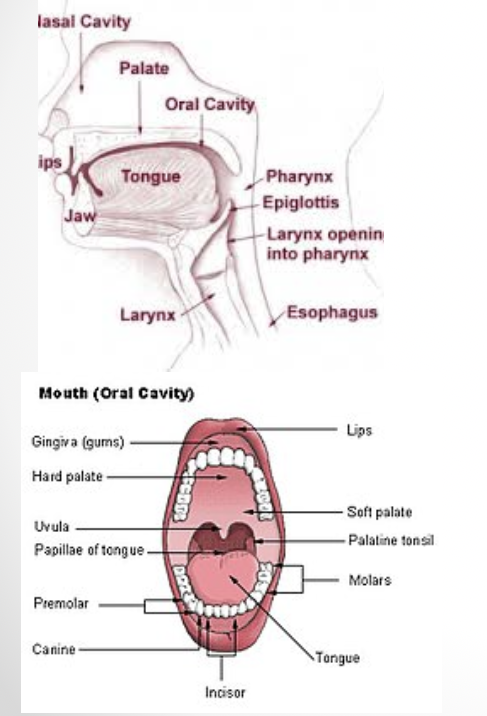
Buccal Cavity: (boundaries & function)
Lateral to oral cavity
Space between the posterior teeth & the cheeks
Laterally - cheeks
Anteriorly - lips
Medially - teeth
Posterior - 3rd molar
plays role in oral resonance when mandible is depressed
Pharyngeal cavity: (location, length, function)
boundaries: behind nasal cavities → vocal folds
tube abt 12 cm in length
FUNCTION:
lined w/ muscle capable of constricting the space of the tube for swallowing
important role in closure of velopharyngeal port (opening between the oropharynx & nasopharynx)
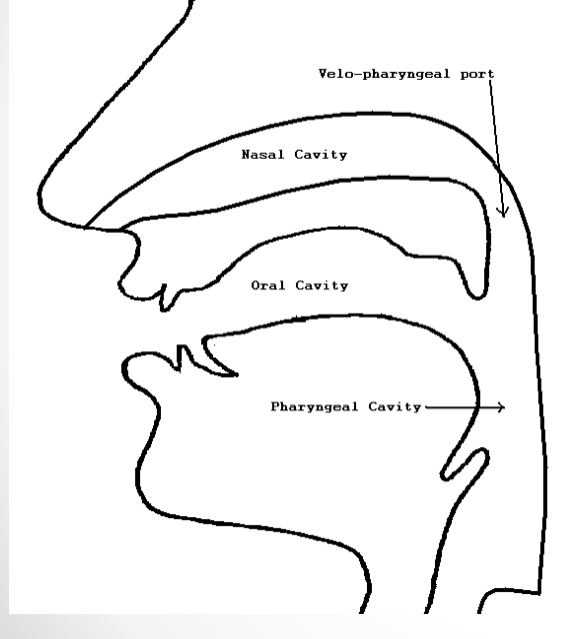
3 regions within the pharyngeal cavity:
Nasopharynx
Oropharynx
Laryngopharynx
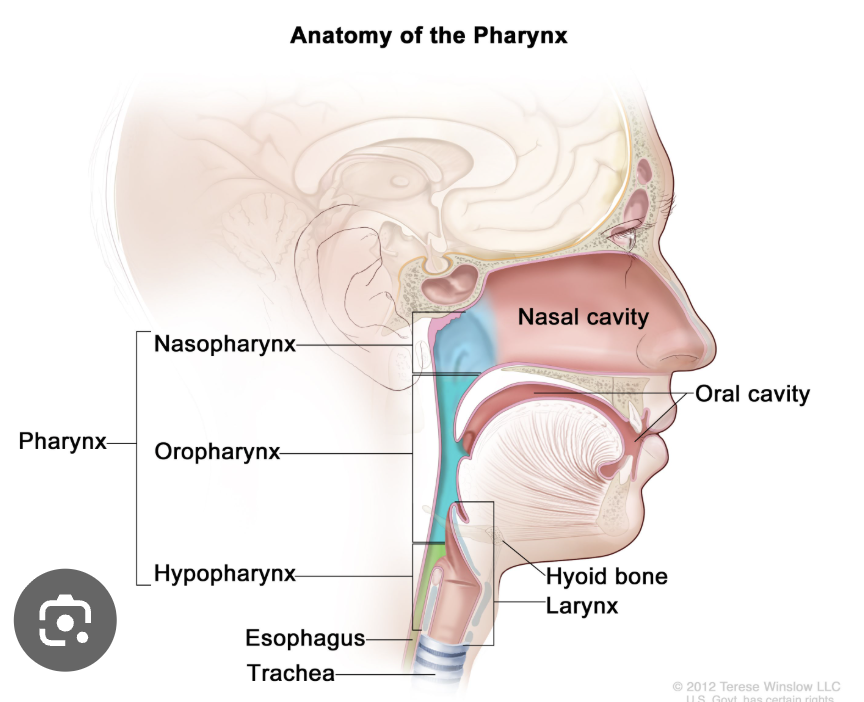
Nasopharynx (boundaries, placement):
space above soft palate
Anterior boundary: nasal choncae
Lateral wall: orfice of the eustachian tube (see photo)
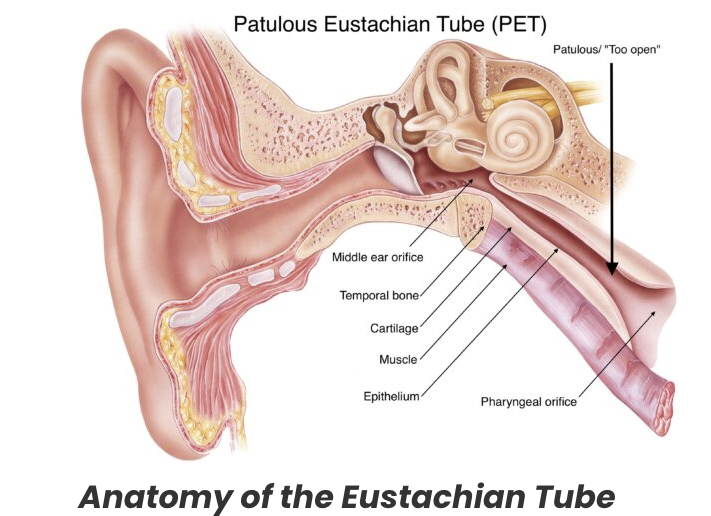
Oropharynx (boundaries):
Superior boundary: velum
Inferior boundary: hyoid bone
Posterior: fringal wall
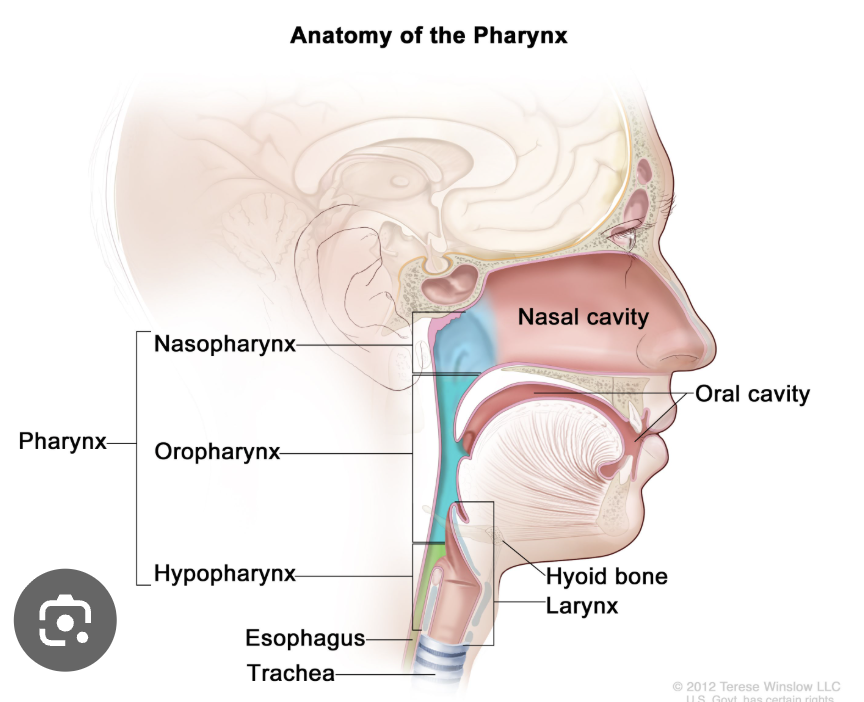
Laryngopharynx (boundaries):
Superior boundary: level of hyoid bone
Anterior boundary: epiglottis
Inferior boundary: upper esophageal sphincter (esophagus)
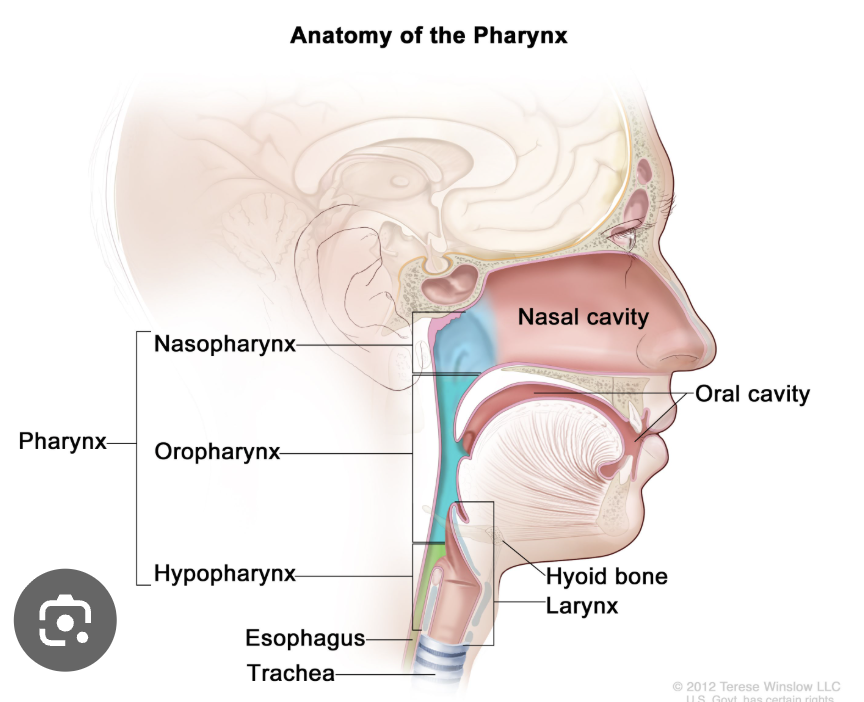
Important:
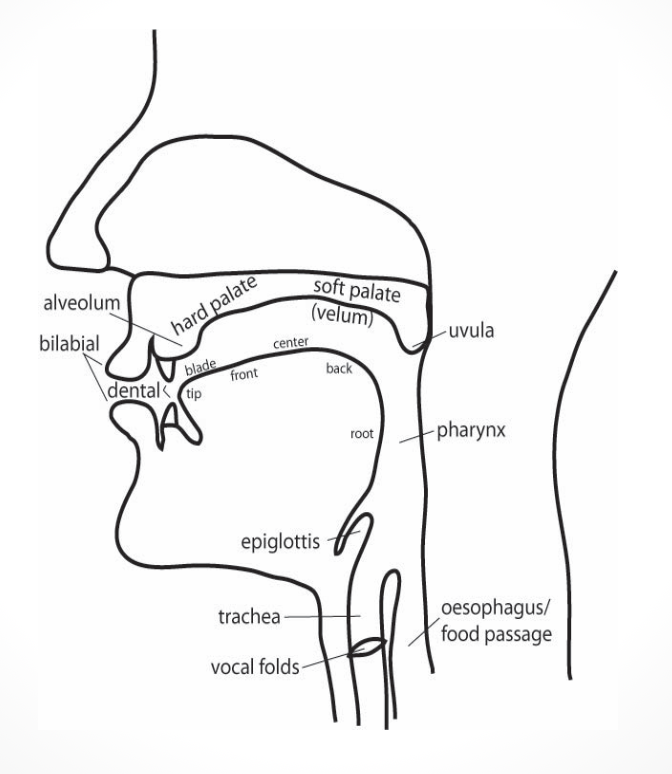
Source Filter Theory of Vowel Production (important to know):
(voice is generated by the vocal folds, routed thru the vocal tract where it’s shaped into the sounds of speech)
Changes in the shape of the tongue, mandible, soft palate (& other articulators) govern the resonance characteristics of the vocal tract
Resonances of the tract determine sound of given vowel
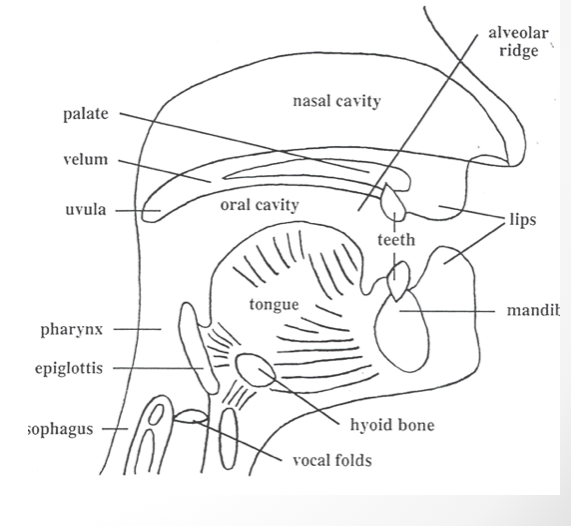
Resonant frequency
moving tongue = changing oral cavity shape (smaller, larger, legthening, shortening)
change oral cavity shape = change the resonant frequency = chance the sound that comes out of the mouth
Source of vowels
Phonation
Source of consonants
include turbulence of frication or combination of voicing & turbulence
As volume decreases…
frequency increases
Source-filter theory
vocal folds produce a tone
filter of the vocal tract changes that tone/frequency
changing the shape of oral cavity = changes the resonant frequencies
this changes the sound that comes out of your mouth
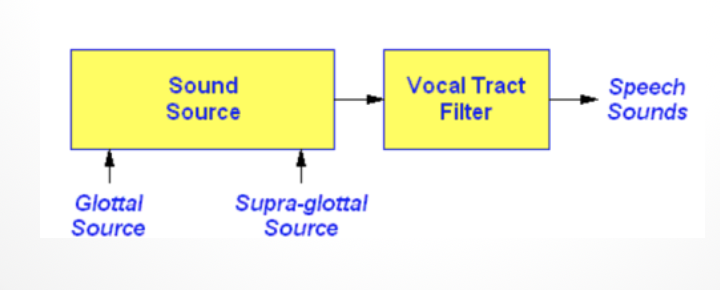
Articulation define:
process of joining two elements together
Articulatory system define:
system of mobile and immobile articulators brought into contact for the purpose of shaping the sounds of speech
Immobile articulator examples:
Alveolar ridge
Hard palate
Teeth
Movile articulators examples:
(makes contact to an immobile articulator)
ex.
Tongue
Lower jaw
Soft palate
Lips
Cheeks
Pharynx
Larynx/hyoid bone
Speech production requires:
execution of extremely well-organized and integrated sequence of neuromotor events
Lips
Lower achieves a greater velocity & force than the upper lip (does most of the work in lip closure)
lower is attached to mandible (movable articulator)
resistant to interference - they adjust and accommodate to physical restraints
lower lip capable of rapidly altering its rate of closure
Mandible
helper (assists the lips, changes position for tongue movement, important for mastication (elevates, grinds, depresses in rhythmic fashion), speech (elevates & depresses for slight modifications/adjustments))
tightly closes when necessary
Tongue (production & movement capabilities):
most important of the articulators
involved in production of most of the phonemes
tongue narrowing, central tongue grooving, retraction, protrusion, tongue body depression
Tongue tip elevation, depression, deviation, (& lateral margins relaxation) sounds:
Tongue tip elevation /t/, /d/
Tongue tip depression /k/, /g/; posterior tongue elevation /k/
Tongue tip deviation, left and right
Lateral margins relaxation /l/
Velum/soft palate (function):
range of motion & rate of movement - matches needs of rapid speech & nonspeech functions
closes for non-nasal speech
Levator veli palatini
opens for nasal sounds /n/ /m/ ng/
Opens & closes in coordination with other articulators avoiding effect of nasal resonance on other phonemes